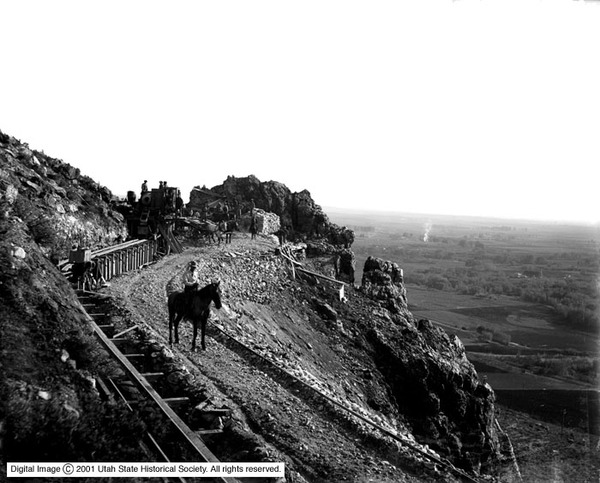Dublin Core
Title
Description
In 1907 the Big Cottonwood Conduit was developed to supply water to Salt Lake City’s growing population. City officials saw it as an opportunity to prevent water shortages. But farmers argued that the water diversion prioritized urban development over their rights and threatened their livelihoods. A legal battle ensued, exposing long-standing tensions between city dwellers and farmers over water.
Salt Lake City initially pulled water from Emigration and City Creeks in the north end of the Salt Lake Valley. But demands of a growing urban population quickly outpaced those sources. Further south, Big Cottonwood Creek offered access to more water, but was already used by farmers in the southern end of the Valley. City officials pressured the farmers to trade their access to the creek for irrigation water piped up from Utah Lake. The two parties debated over who would have access to the water during winter when irrigation was not needed and compromised on the City diverting one-half the stream flow during those months. Ultimately, farmers consented to give up potable mountain water in exchange for irrigation water that was unfit for drinking.
The agreement did not last long. Hard feelings persisted even after the deal was made, motivating about 500 farmers and water-users to challenge the agreement in court. A final judgement wasn’t issued on the case until a 1918 appeal came out in favor of the City. But the feud between city officials and farmers ran for much longer. In 1926, water shortages in Salt Lake sparked speculation that someone had been stealing large quantities of water from the Big Cottonwood Conduit. Investigators found that a valve lock had been tampered with and canyon water turned toward farmland. Farmers in the vicinity were questioned but claimed to know nothing about the open valve.
It is unclear whether anyone was held accountable for the water theft, but city dwellers seem to have won this decades-long conflict. Big Cottonwood Creek continues to provide as much as 20% of the water supply for Salt Lake City, even as 80% of Utah’s water is used for agriculture. The saga of the Big Cottonwood Conduit represents a persistent divide between urban and rural water interests in Utah.
Creator
Source
Image: The construction progress of a conduit near the mouth of Big Cottonwood Canyon, 1906. The conduit was subject to a decades-long conflict involving agricultural and municipal water interests in Salt Lake Valley. Courtesy of Utah State Historical Society.
_______________
See “Conduit Tapped and Much City Water Stolen,” Salt Lake Telegram, May 17, 1926; “Big Cotton Conduit And What it Will Cost,” Salt Lake Herald-Republican, November 18, 1904; “Water Now Flows Through Conduit,” Inter-Mountain Republican, February 6, 1907; “Begin Trial of Big Water Suit,” Salt Lake Herald-Republican, October 1, 1907; “Sources of Salt Lake City’s Water Supply,” Salt Lake Tribune, January 3, 1909; “How the Big Cottonwood Conduit Will Bring Water to Salt Lake,” Salt Lake Herald-Republican, October 1, 1905; Leeroy W. Hooton, Jr., “The Big Cottonwood Conduit,” Salt Lake City Docs, January 25, 1999; Leeroy W. Hooton, Jr., “Salt Lake City Old Water Conveyance Systems: Early Water Conveyance Systems (1847 - 1909) Serve the City’s Residents,” Salt Lake City Docs, October 8, 2009; Fisher Sanford Harris, “100 Years of Water Development” (a report submitted to the board of directors of the Metropolitan Water District of Salt Lake City, the board of commissioners of Salt Lake City Corporation, and to the citizens of Salt Lake City, Salt Lake City, UT, April 1942).

